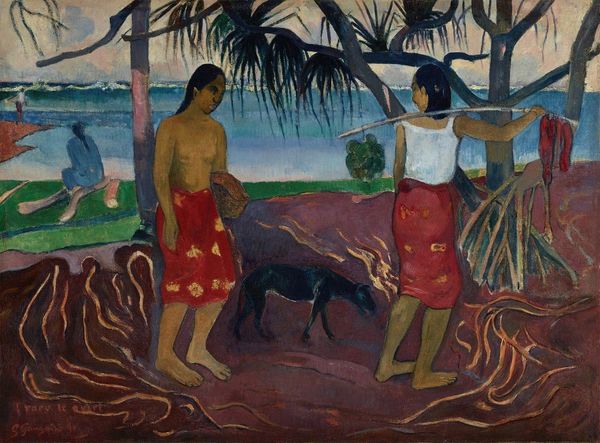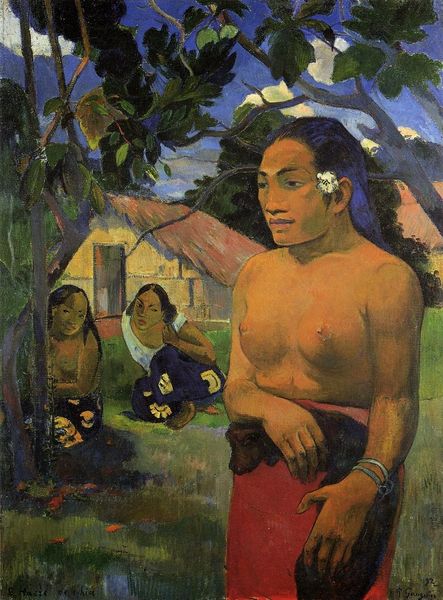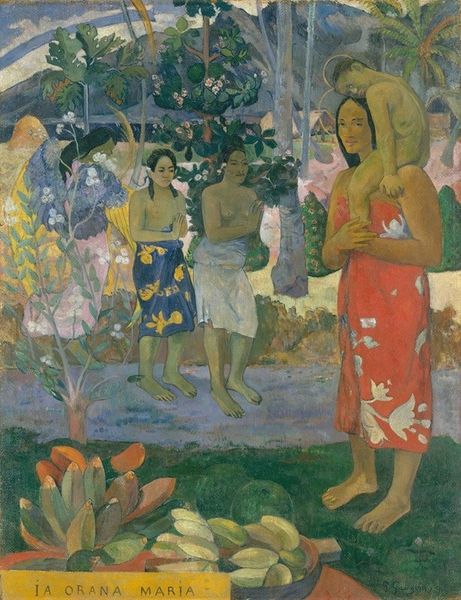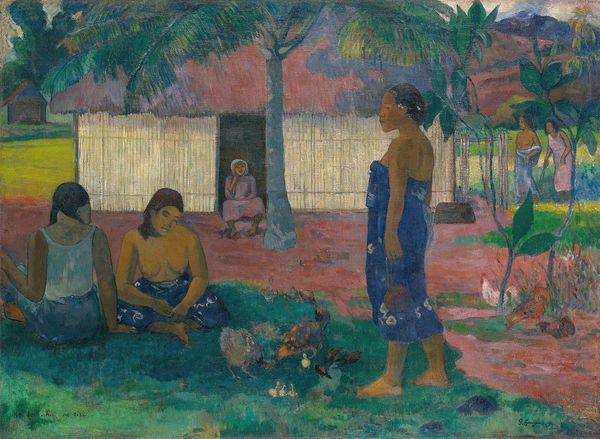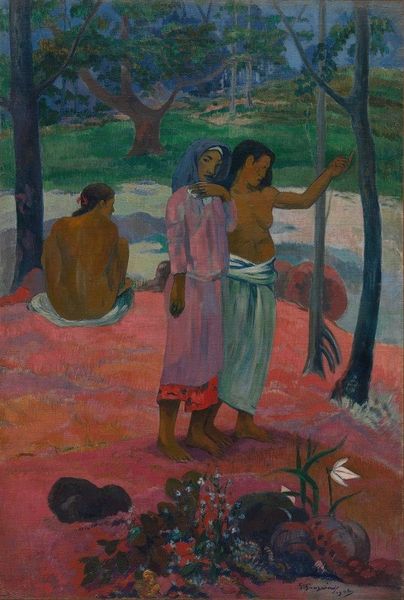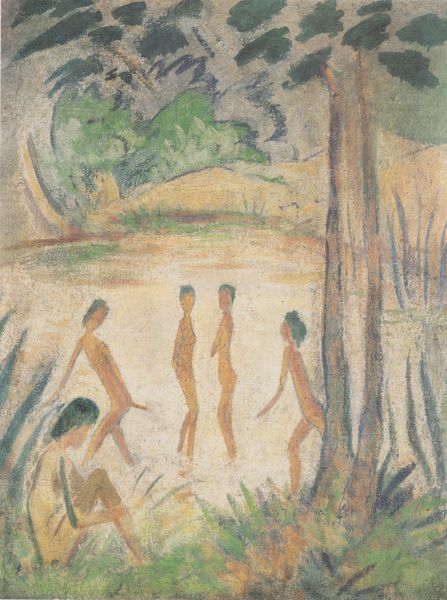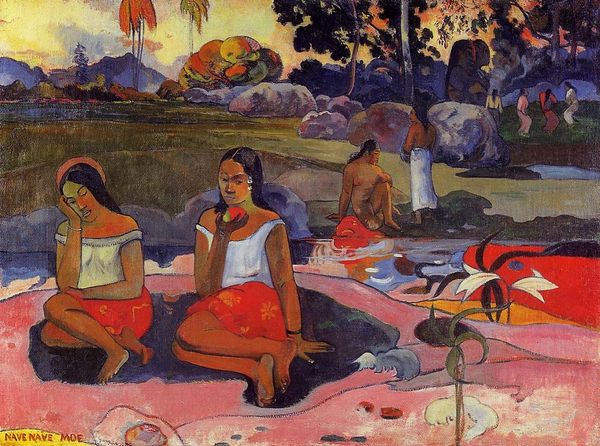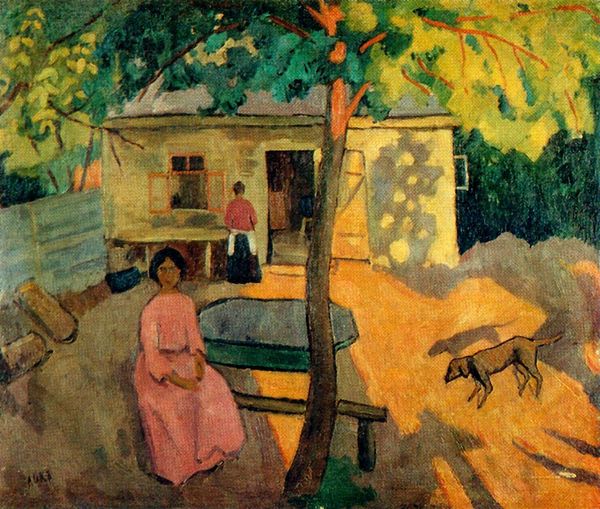
painting, oil-paint
#
narrative-art
#
painting
#
oil-paint
#
landscape
#
figuration
#
symbolism
#
post-impressionism
Copyright: Public Domain: Artvee
Paul Gauguin's "Parau Parau" presents a Tahitian scene with a striking emphasis on color and form. The composition is divided into distinct planes, foreground, middle ground and background, each hosting figures in varied states of repose or activity. Gauguin employs a deliberate flattening of perspective which disrupts traditional notions of depth. He uses broad areas of color, which range from the red-orange earth to the cool blues and greens of the foliage, creating a vibrant yet somewhat unsettling visual field. The simplified forms of the figures, outlined with dark contours, reinforce the painting's surface and decorative quality. In this constructed space, Gauguin seems to challenge established perceptions of the exotic, offering instead a complex interplay between surface and depth, representation and abstraction. "Parau Parau" invites us to reconsider our own expectations and assumptions about art and culture.
Comments
No comments
Be the first to comment and join the conversation on the ultimate creative platform.

